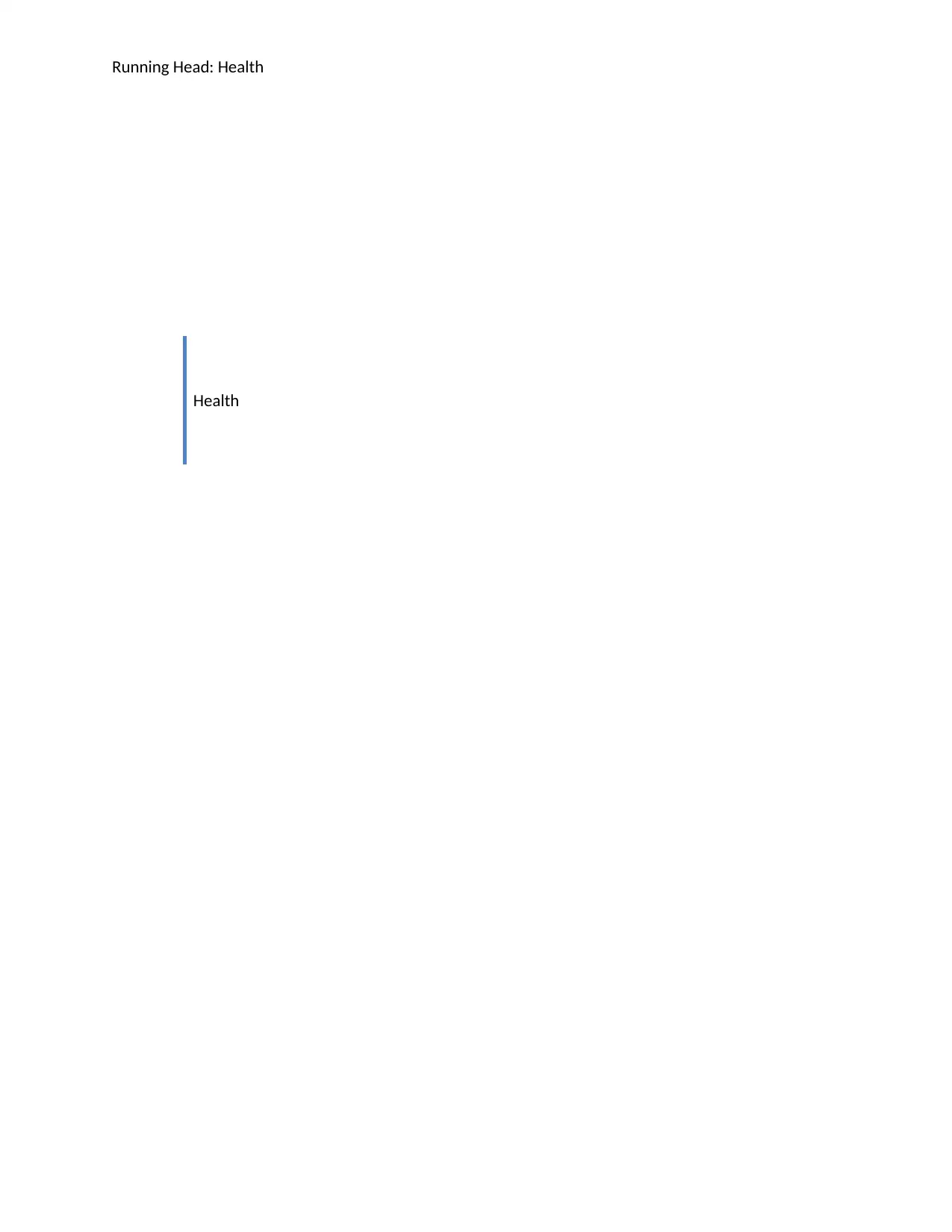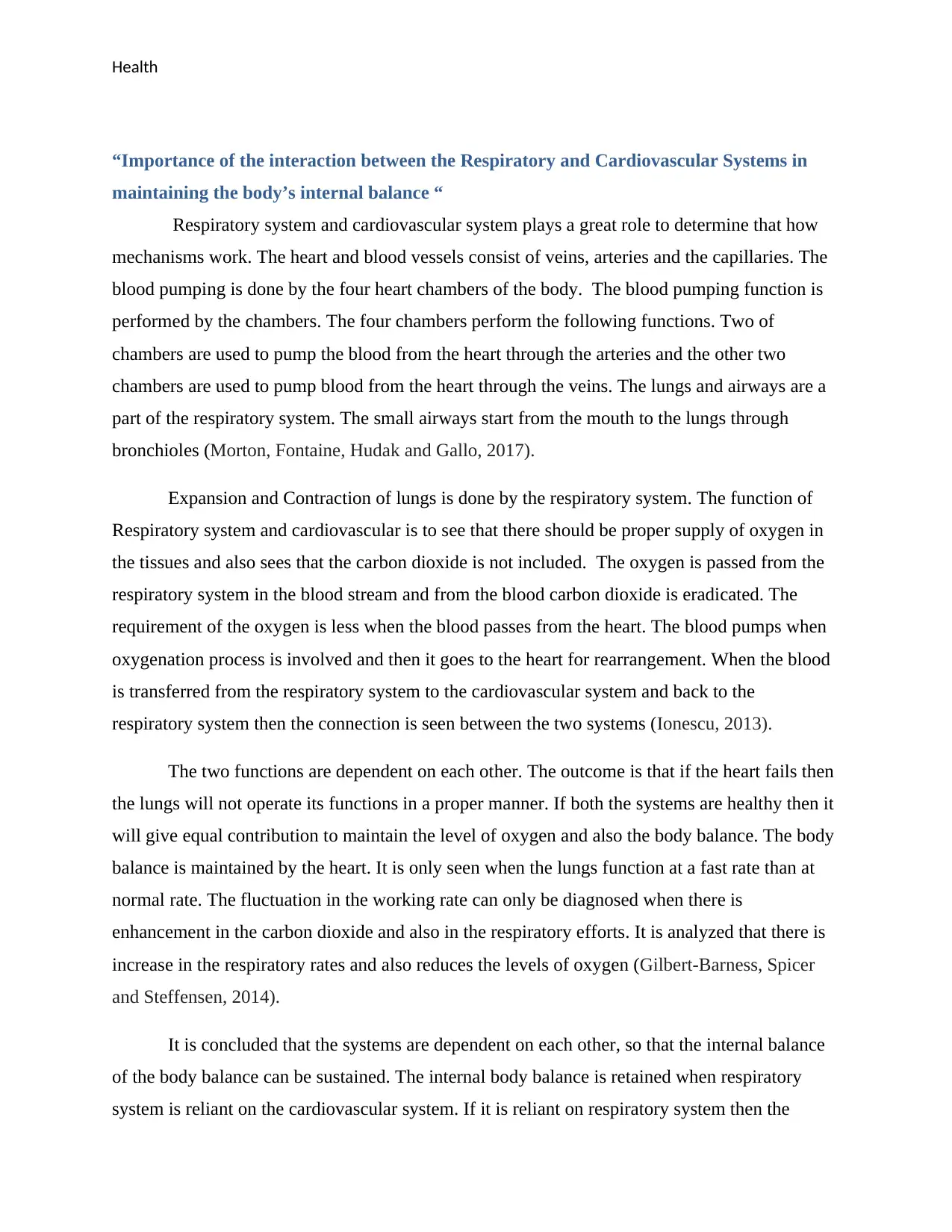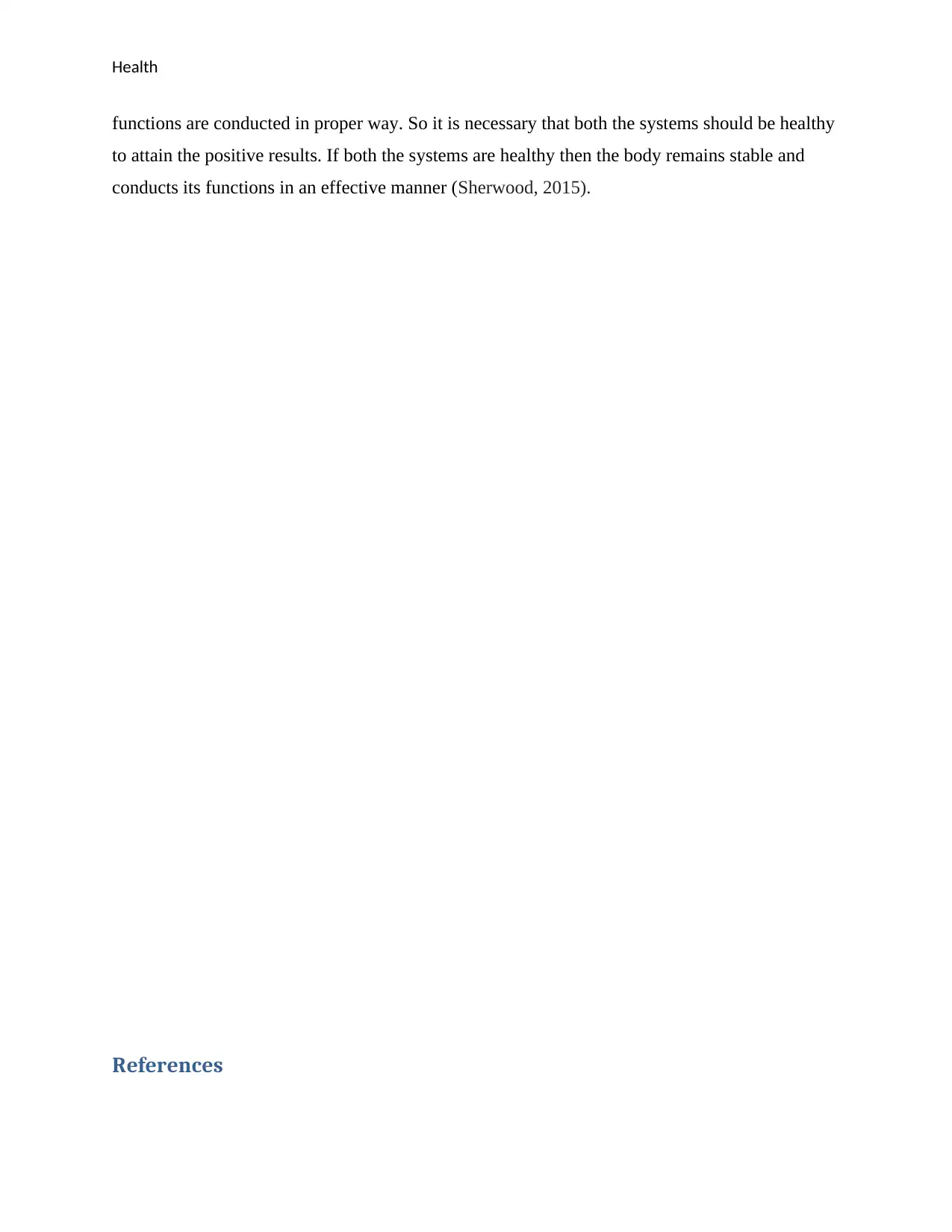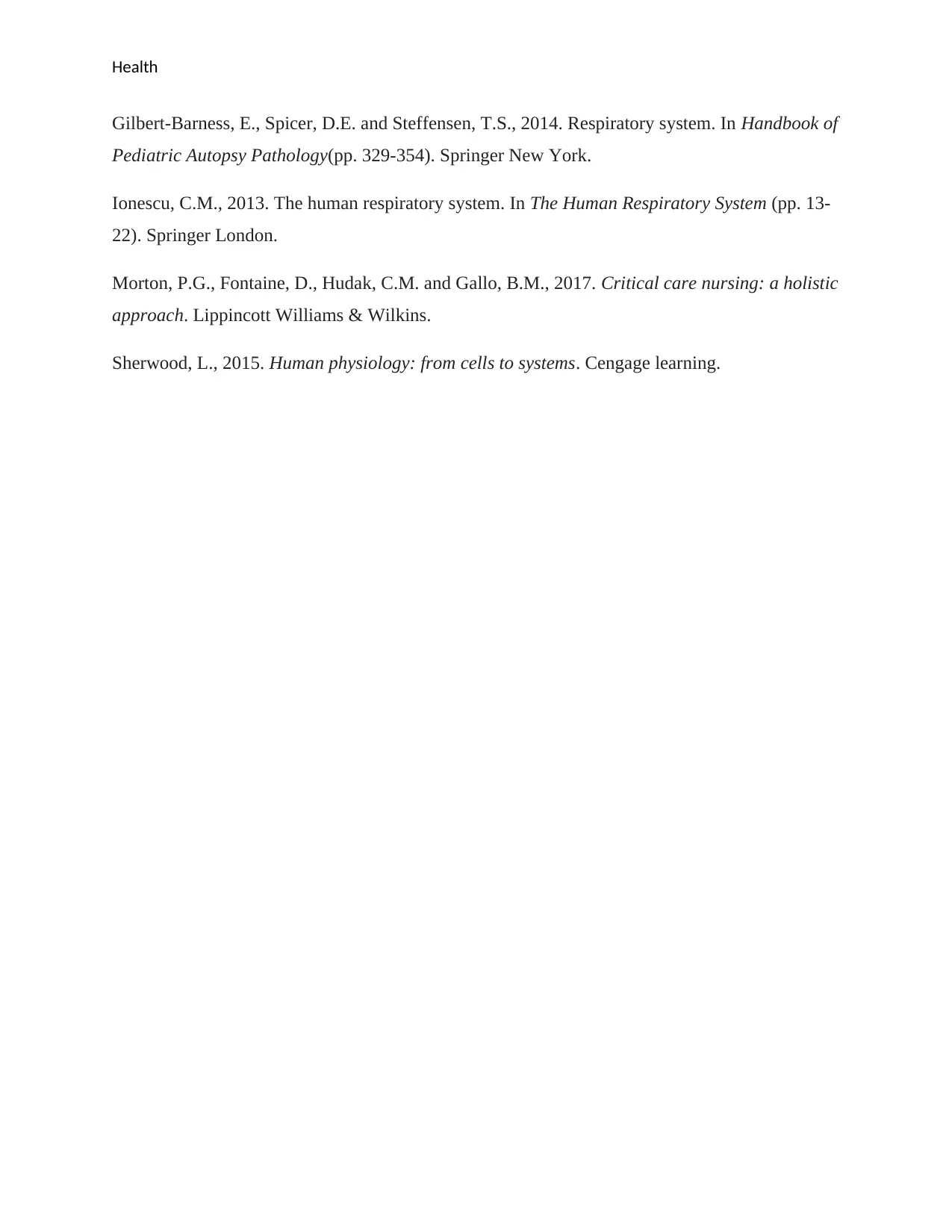The Interplay of Respiratory and Cardiovascular Systems in Health
VerifiedAdded on 2020/03/16
|4
|629
|204
Report
AI Summary
This report examines the crucial relationship between the respiratory and cardiovascular systems and their roles in maintaining the body's internal balance. It highlights how the lungs and heart work together to facilitate oxygen supply and carbon dioxide removal. The report explains the physiological processes involved, including blood pumping, oxygenation, and the impact of these systems on overall health. The report also includes the significance of the respiratory and cardiovascular systems, and how their interdependence ensures proper bodily functions. The report highlights the importance of both systems being healthy to maintain the internal balance of the body. The report also includes references to support the information provided.
1 out of 4











![[object Object]](/_next/static/media/star-bottom.7253800d.svg)